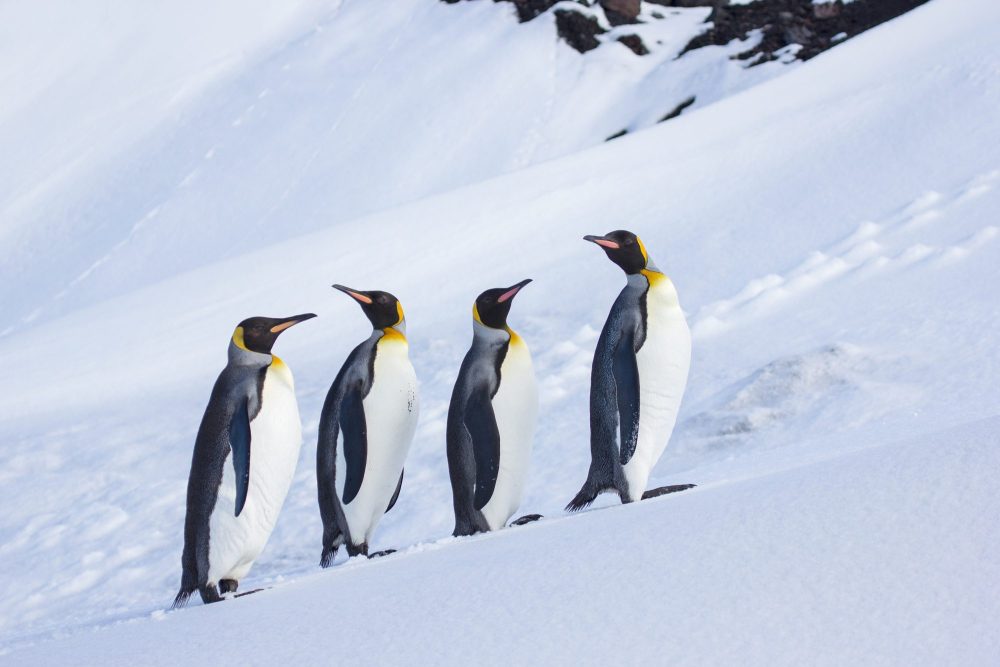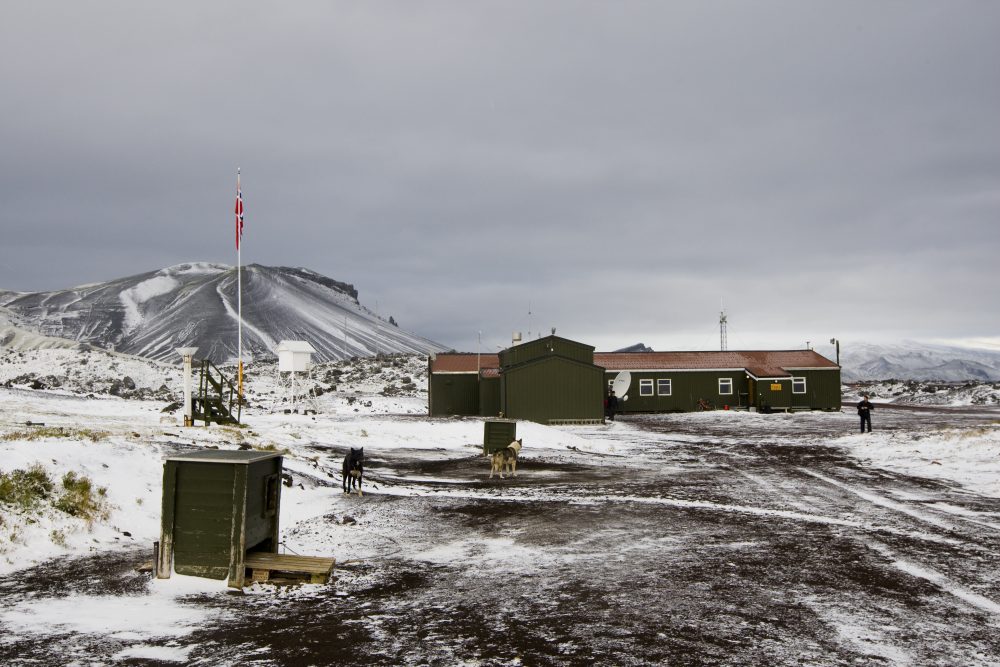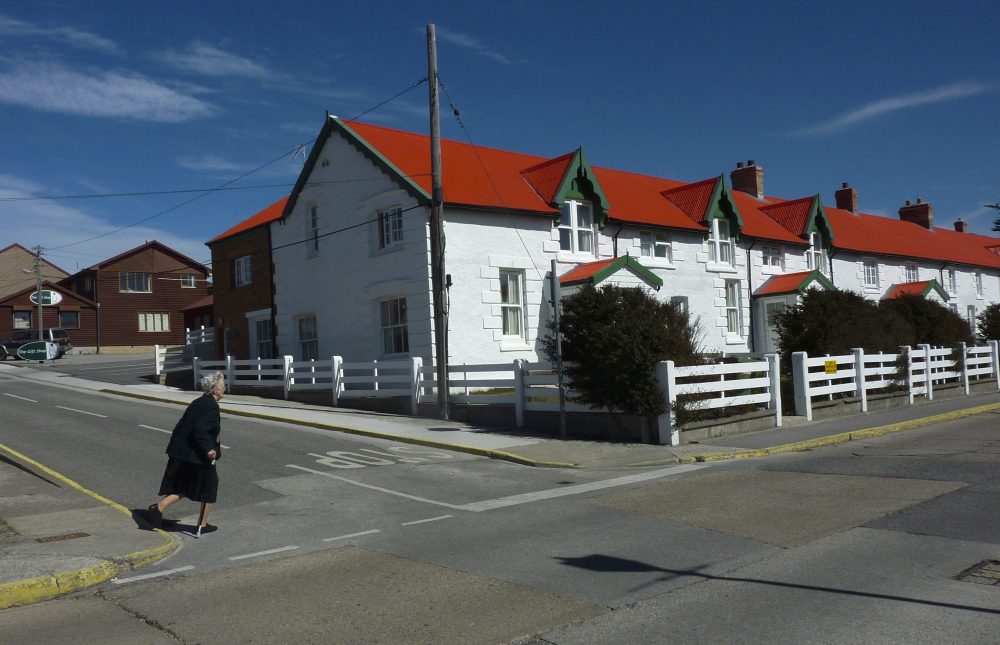Politics
Penguins and polar bears outnumber people in some tariff-hit territories – National TenX News

Some of the world’s least inhabited islands and territories have been hit by U.S. President Donald Trump’s “reciprocal” tariffs on all foreign trading partners — and some appear to have more penguins and polar bears than trade agreements with the U.S.
Tiny tropical islands and remote outposts in the Antarctic and far North were included in the list of dozens of countries and territories that now face a baseline tariff of 10 per cent. Some of the outlier targets face far higher tariffs, based on calculated trade deficits with the U.S., leaving world leaders scratching their heads.
“Nowhere on Earth is exempt from this,” Australian Prime Minister Anthony Albanese, whose country includes many of the territories caught up in Trump’s tariffs, told reporters Wednesday.
None of the territories listed below were included in the National Trade Estimate report on foreign trade barriers from U.S. Trade Representative Jamieson Greer’s office, released Monday.
The Trump administration has pointed to the report’s findings to justify the new global tariff policy, which is also based on a national emergency on foreign trade that Trump declared in his executive order Wednesday.
“President Trump is taking urgent action to protect the national security and economy of the United States,” Greer said in a statement. “The current lack of trade reciprocity, demonstrated by our chronic trade deficit, has weakened our economic and national security.”
Here are just some of the targets of Trump’s trade war that are raising eyebrows:

Heard and McDonald Islands – 10% tariff
This Australian territory comprises two islands in the remote Antarctic that is uninhabited by people, other than temporary Australian scientific expeditions. A permanent research station on Heard Island was closed in 1954.
The islands are home to penguins and seals and are about a two-week sail from the Australian mainland.
Despite hardly any actual trade with the U.S. — government data shows no imports from the islands last year — the territory faces the 10 per cent baseline tariff.
The CIA World Factbook says economic activity on the islands effectively ended in 1877, when elephant seal oil trade ended after the local seal population was nearly killed off.
Three tropical coral islands in the South Pacific make up the New Zealand territory of Tokelau, home to 1,500 people.
It primarily survives on subsistence agriculture, meaning hardly any crops are exported, as well as fishing.
Trade in goods with the U.S. amounted to roughly US$500,000 last year, according to U.S. government data. “Economic opportunities in Tokelau are sparse,” the CIA World Factbook says.
Global trade data compiled by the Observatory of Economic Complexity shows the U.S. is near the bottom of the territory’s export and import markets.
Christmas Island – 10% tariff
The Australian outpost in the Indian Ocean — located 360 kilometres south of the Indonesian capital Jakarta, with a population of fewer than 2,000 people — has used U.S. heavy machinery to mine phosphate for decades.

Get weekly money news
Get expert insights, Q&A on markets, housing, inflation, and personal finance information delivered to you every Saturday.
“There’s no trade between Christmas Island and America, except that we do buy mining equipment through Tractors Singapore,” said Christmas Island Shire President Gordon Thomson, referring to the regional dealer for the Texas manufacturing giant Caterpillar Inc.
“The trade, if anything, is U.S. product into Christmas Island. The only thing that we export is phosphate and that goes to Malaysia, Indonesia, maybe Thailand and a bit to the Australian mainland,” Thomson said.
In 2023, the U.S. exported US$49 million in American goods to Christmas Island, while importing just US$4.4 million, according to the U.S. Census Bureau — an outlier year in a trade relationship that is otherwise relatively small.

Svalbard and Jan Mayen – 10% tariff
The Trump administration lumped together Svalbard, a Norwegian archipelago home to about 2,500 people, and Jan Mayen, a volcanic island 1,100 kilometres away, in its tariff list and imposed a 10 per cent levy on the combined territory.
Jan Mayen is completely uninhabited, other than a combined Norwegian military and meteorological research outpost and a local population of polar bears, and is partially covered by glaciers.
The Norwegian military’s main role there is to oversee Norway’s claim to sovereignty over the island.
U.S. Census data shows the U.S. has actually had a longstanding trade surplus with Svalbard and Jan Mayen for years, exporting far more than it imports.
The most the U.S. has imported from the territory in the past five years is around US$100,000.
British Indian Ocean Territory – 10% tariff
This overseas British territory comprises over 1,000 individual islands in the Chagos Archipelago between Indonesia and Tanzania, with a combined area of just 60 square kilometres.
The largest island, Diego Garcia, is home to a joint U.K.-U.S. military base and 4,000 British and American troops, but the territory has zero permanent residents.
U.S. government data shows millions of dollars of American goods are exported to the territory every year — likely military equipment — with far less goods imported in return.
Cocos (Keeling) Islands – 10% tariff
Another Australian territory in the Indian Ocean, this one is made up of two atolls with a combined total of 27 coral islands, with less than 600 people calling it home.
It primarily relies on tourism, and most food and other necessities are imported from Australia, yet the U.S. is a top export market for shipbuilding.
Two-way trade in goods amounts to roughly US$3 million a year, according to the U.S. Census Bureau.

Falkland Islands – 41% tariff
Long disputed between the United Kingdom and Argentina — including a military conflict in the 1980s — the Falkland Islands is home to roughly 3,600 people in the southern Atlantic Ocean.
It relies mostly on fishing, agriculture and tourism for its economy, and wool from its sheep farming sector is a top export.
The Trump administration claims the territory’s tariffs, trade barriers and “currency manipulation” amounts to an 82 per cent tax on U.S. imports, leading it to impose a 41 per cent tariff in return.
The U.S. has reported a trade goods deficit with the Falkland Islands for years.
Last year it imported US$18.7 million more in goods than it exported, down from a US$31.2 million deficit two years prior.
Norfolk Island – 29% tariff
This Pacific island, another Australian territory with a population of around 2,000 people, also received more severe tariff treatment with a 29 per cent levy.
That’s based on what the Trump administration claims is a total 58 per cent extra charge on U.S. goods.
The island’s economy primarily revolves around tourism, and most of its minimal agricultural exports are to Europe. Albanese told the Australian Broadcasting Corporation the separate, higher tariff for an Australian territory “was somewhat unexpected and a bit strange.”
“To my knowledge, we do not export anything to the United States,” Norfolk Island Administrator George Plant, the Australian government’s representative on the island, told the AP.
“We don’t charge tariffs on anything. I can’t think of any non-tariff barriers that would be in place either, so we’re scratching our heads here.”
Norfolk Island business owners who spoke with Reuters could think of no manufacturing industry on the island.
According to U.S. government data, two-way trade with Norfolk Island amounted to less than $US1.5 million over the past three years combined.
Saint Pierre and Miquelon – 50% tariff
According to the Trump administration, this French overseas territory right next to Newfoundland and Labrador with a population around 5,000 people tariffs U.S. goods at a 99 per cent rate — justifying a 50 per cent tariff, one of the highest rates on the entire list released Wednesday.
The archipelago of eight small islands relies on fishing exports and tourism for its economy.
Besides a US$3.4 million import of goods from the territory in July 2024, trade with the U.S. is minimal, U.S. government data shows.
—With files from the Associated Press and Reuters
Politics
A 6.0 magnitude earthquake shakes eastern Afghanistan near the Pakistan border – National TenX News

A magnitude 6.0 earthquake shook eastern Afghanistan near the Pakistan border late Sunday, according to the U.S. Geological Survey.
The quake’s epicenter was near Jalalabad, Nangarhar province, and it had a depth of 8 kilometers, the USGS said. It struck at 11:47 p.m. local time Sunday.

Get daily National news
Get the day’s top news, political, economic, and current affairs headlines, delivered to your inbox once a day.
Naqibullah Rahimi, a spokesman for the Nangarhar Public Health Department, said 15 people were injured and taken to the local hospital for treatment.
There was a second quake some 20 minutes later in the same province, with a magnitude of 4.5 and a depth of 10 kilometers.
A magnitude 6.3 earthquake struck Afghanistan on Oct. 7, 2023, followed by strong aftershocks. The Taliban government estimated that at least 4,000 people perished.
The U.N. gave a far lower death toll of about 1,500. It was the deadliest natural disaster to strike Afghanistan in recent memory.
© 2025 The Canadian Press
Politics
Pakistan’s Punjab province battered by its biggest flood with 2 million people at risk – National TenX News

Pakistan’s eastern Punjab province is dealing with the biggest flood in its history, a senior official said Sunday, as water levels of rivers rise to all-time highs.
Global warming has worsened monsoon rains this year in Pakistan, one of the countries most vulnerable to climate change, according to a new study. Downpours and cloudbursts have triggered flash floods and landslides across the mountainous north and northwest in recent months.
Residents in eastern Punjab have also experienced abnormal amounts of rain, as well as cross-border flooding after India released water from swollen rivers and its overflowing dams into Pakistan’s low-lying regions.
“This is the biggest flood in the history of the Punjab. The flood has affected 2 million people. It’s the first time that the three rivers — Sutlej, Chenab, and Ravi — have carried such high levels of water,” the senior minister for the province, Maryam Aurangzeb, told a press conference on Sunday.
Local authorities were evacuating people and using educational institutions, police and security facilities as rescue camps, she said. Pakistani TV channels showed people clambering into rescue boats and sailing across fully submerged farmland to safety. Others loaded belongings into boats, salvaging what remained from damaged homes, now abandoned.
“The Foreign Ministry is collecting data regarding India’s deliberate release of water into Pakistan,” Aurangzeb said. There was no immediate comment from India.

Get daily National news
Get the day’s top news, political, economic, and current affairs headlines, delivered to your inbox once a day.
India had alerted Pakistan to the possibility of cross-border flooding last week, the first public diplomatic contact between the rivals since a crisis brought them close to war in May.
Punjab, home to some 150 million people, is a vital part of the country’s agricultural sector and is Pakistan’s main wheat producer. Ferocious flooding in 2022 wiped out huge swathes of crops in the east and south of the country, leading Prime Minister Shehbaz Sharif to warn that the country faced food shortages.
Figures from Pakistan’s national weather center show that Punjab received 26.5% more monsoon rain between July 1 and Aug. 27, compared to the same period last year.
‘We cannot fight the water or stop it’
In Multan, authorities installed explosives at five key embankments to divert water away from the city, if needed, ahead of a massive wave on its way from the Chenab River.
Multan Commissioner Amir Kareem Khan said drones were used to monitor low-lying areas while teams tried to persuade residents who had not yet evacuated to do so.
“The water is coming in large quantities — we cannot fight it, we cannot stop it,” Deputy Commissioner Wasim Hamad Sindhu said, appealing on people to seek shelter in government-run camps.
Resident Emaan Fatima went to a camp after water surrounded her home.
“Our animals are starving, and we are also not getting food anywhere else,” she said. “We are not sitting here by choice. Our houses are in danger. We are very worried.”
Pakistan’s disaster management authority said 849 people have been killed and 1,130 injured nationwide in rain-related incidents since June 26.
The chief minister of southern Sindh province, Murad Ali Shah, said he had instructed the Irrigation Department to get ready for a “super flood” at barrages.
“We call it a super flood when the water level exceeds 900,000 cusec (cubic foot per second),” Shah told reporters. “We hope that the water will not reach the 900,000 level, but we still have to be prepared. The most important thing for us is that we save human lives and livestock.”
Pakistan’s monsoon season usually runs to the end of September.
© 2025 The Canadian Press
Politics
Flotilla leaves Barcelona in biggest attempt yet to break Israeli blockade of Gaza – National TenX News

A flotilla of ships departed from Barcelona to the Gaza Strip Sunday with humanitarian aid and activists on board in the largest attempt yet to break the long Israeli blockade of the Palestinian territory by sea.
This comes as Israel has stepped up its offensive on Gaza City, limiting the deliveries of food and basic supplies in the north of the Palestinian territory. Food experts warned earlier this month that the city was in famine and that half a million people across the strip were facing catastrophic levels of hunger.
The Global Sumud Flotilla is carrying food, water and medicine. Activists on board demanded safe passage to deliver the much-needed aid and the opening of a humanitarian sea corridor, according to a statement. The almost 23-month conflict has killed more than 63,000 people, with at least 332 Palestinians dying of malnutrition, including 124 children, according to the Gaza Health Ministry.
The maritime convoy of about 20 boats and delegations from 44 countries is claimed to be the largest attempt to date to break the Israeli blockade of the Gaza Strip by sea, which has now lasted 18 years. They will be joined by more ships from ports in Italy and Tunisia in the coming days, on the route from the western end of the Mediterranean to the Gaza Strip, organizers said.
Thousands of supporters flocked to the Barcelona pier, some of them wearing kaffiyehs and chanting “Free Palestine!” and “Boycott Israel!” to send off a wide variety of boats, flying Palestinian flags, from rundown old luxury yachts to tiny wooden sailboats and industrial-looking vessels. One of them, the Sirus, is more than 100 years old.

Get breaking National news
For news impacting Canada and around the world, sign up for breaking news alerts delivered directly to you when they happen.
Around 70 boats are expected to take part in the final leg of the journey, flotilla spokesperson Saif Abukeshek told Spanish public television after the departure. The fleet could reach Gaza around Sept. 14 or 15, he added.
“The story here is about Palestine. The story here is how people are being deliberately deprived of the very basic means to survive,” said Swedish activist Greta Thunberg at a news conference. She is one of the most recognizable figures on the expedition, formed by hundreds of activists, politicians such as the former mayor of Barcelona, Ada Colau, and journalists.
Ships carrying tons of humanitarian aid departed from the Italian city of Genoa and will join the expedition in the coming days.
It is not the first time Thunberg has attempted to reach Gaza waters this year. She was deported by Israel in June when the ship she was traveling on with 11 other people, the Madleen, was stopped by the Israeli military.
“It has been very clear that Israel has been continuously violating international law by either attacking, unlawfully intercepting the boats in international waters, and continuously preventing the humanitarian aid from coming in,” said Thunberg in an interview with The Associated Press on Saturday.
The Global Sumud Flotilla will be the fourth attempt to break the maritime blockade so far this year. The Conscience first tried in May, but was attacked by drones after setting sail from Malta.
After the Madleen, the Israeli military stopped another aid ship, the Handala, in late July, detained 21 international activists and reporters and seized its cargo, including baby formula, food and medicine, according to the Freedom Flotilla Coalition.
In a news conference before the departure in Barcelona, actor Liam Cunningham played a video showing a girl singing while planning her own funeral. The girl, Fatima, died four days ago, he said.
“What sort of world have we slid into where children are making their own funeral arrangements?” Cunningham told reporters.
An Israeli official said Saturday that the country will soon halt or slow humanitarian aid into parts of northern Gaza, as it expands its military offensive against Hamas, a day after the city was declared a combat zone.
The conflict began on Oct. 7, 2023, when an attack by Hamas militants inside Israel claimed the lives of 1,200 people, most of them civilians, and took 251 people hostage.
© 2025 The Canadian Press
-

 Fashion6 months ago
Fashion6 months agoThese ’90s fashion trends are making a comeback in 2017
-

 Entertainment6 months ago
Entertainment6 months agoThe final 6 ‘Game of Thrones’ episodes might feel like a full season
-

 Fashion6 months ago
Fashion6 months agoAccording to Dior Couture, this taboo fashion accessory is back
-

 Politics4 months ago
Politics4 months agoBefore being named Pope Leo XIV, he was Cardinal Robert Prevost. Who is he? – National TenX News
-

 Entertainment6 months ago
Entertainment6 months agoThe old and New Edition cast comes together to perform
-

 Sports6 months ago
Sports6 months agoPhillies’ Aaron Altherr makes mind-boggling barehanded play
-

 Entertainment6 months ago
Entertainment6 months agoDisney’s live-action Aladdin finally finds its stars
-

 Business6 months ago
Business6 months agoUber and Lyft are finally available in all of New York State













